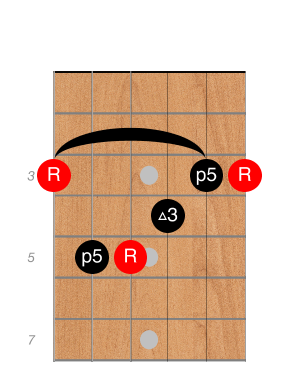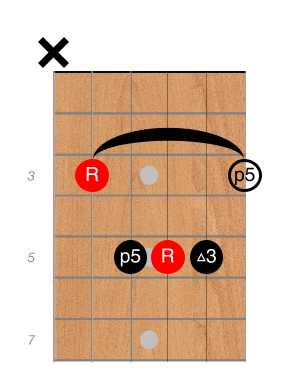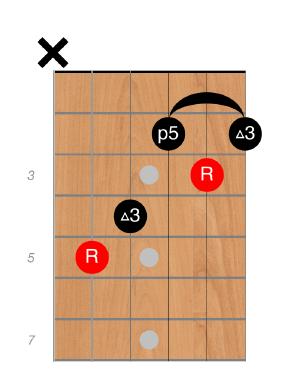Barre chords
Cowboy chords are great, especially for “campfire songs”. An awful lot of country and pop music can be played using nothing but major chords in open position.
But if you want to rock, or you want to solo, or if you just want to become a more accomplished and jazzier guitarist in general, you’re going to have to tackle barre chords sooner or later.
Full barre chords
The way to make chord shapes movable is to eliminate open strings. If every note is fretted, then moving a shape up or down the fretboard doesn’t change its quality. An A Major at the fifth fret becomes a B Major when moved up two frets. If you know how to play an Em9♭5 at the 3rd fret, then moving it up to the 4th fret makes it an Fm9♭5.
The good news is that there are really only three barre chord shapes that you absolutely must learn: the E shape, the A shape, and the C shape.
They are named from the cowboy chord shapes you already learned (hopefully you can “see” the open chord shapes if you visualize the nut in place of the barred notes).

Fig 1. E shape barre chord

Fig 2. A shape barre chord

Fig 3. C shape barre chord
If you truly KNOW these three shapes and how they interrelate, you’ll be able to easily and effortlessly play major chords anywhere on the neck, not just in open position.
As usual, let’s start with a TDG test to determine when you truly KNOW these chords: